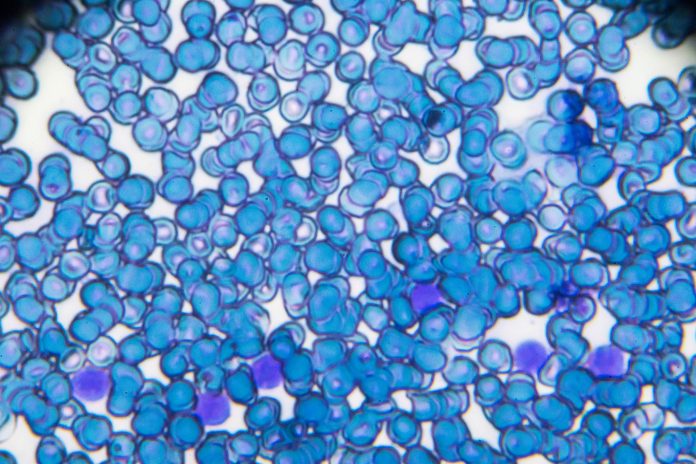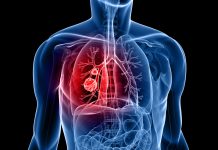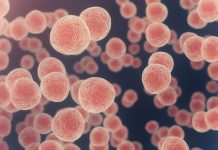Dr Zisis Kozlakidis explores the value of nutrition in acute childhood leukaemia diagnosis and treatment
The global burden of cancer in children is expected to rise, with recent projections estimating that 6.7 million incident cases will be diagnosed between 2015 and 2030. (1)
The great majority of these patient cases are anticipated to occur in low- and middle-income countries (LMICs) where population growth, changes in lifestyle plus exposure to environmental pollutants all play a part as major contributing factors.
Acute leukaemia is one of the most frequently diagnosed types of cancer among children and adolescents, with an estimated worldwide incidence of approximately 46 cases per million per year in children aged 0-14 years. (2)
Despite the relatively high frequency within childhood cancers, the causes are not well understood.
For example, acute childhood leukaemia is well-linked to X-ray radiation exposure, specific forms of chemotherapy and some genetic syndromes – yet all of these causes taken together may only explain as low as 10% of all diagnosed cases. (3)
Therefore, there is a need to widen our understanding of the causes, and in doing so, the underlying opportunities for future preventative and therapeutic opportunities might also emerge.
The impact of lifestyle on acute leukaemia
The very different incidence observed for acute leukaemia by geographic regions worldwide has led many scientists to propose that lifestyle and environmental factors, which are also highly regionally specific, may be inherently involved in its aetiology.
This is not the first case where such distinct regional variations have been observed regarding specific cancer incidence.
For example, kidney cancer in adults also displays a high geographically dependent incidence, with the highest rates in Europe registered in Czechia and the lowest in Cyprus and Bulgaria.
Ongoing studies are currently attempting to elucidate the underlying environmental factors contributing to these highly specific regional patterns.
For childhood leukaemia, a peak incidence occurs at approximately two to five years of age. Therefore, it is reasonable to assume that factors during pregnancy or the very first years of the child’s life might play a role.
For example, studies have shown that maternal smoking and alcohol consumption during pregnancy contributes to the emergence of acute leukaemia.
These two behaviours, i.e., smoking and alcohol consumption, are strongly linked with the development of many other cancers, and as such, it was an unsurprising outcome.
However, they constitute only part of the picture and still little is known about the impact of other lifestyle factors, such as, for example, the mother’s overall diet.
The importance of nutrition in cancer diagnosis and treatment
The overall diet or nutritional status is a measurable and modifiable factor often not considered during cancer diagnosis and treatment; therefore, its clinical impact remains understudied and undervalued.
Addressing poor nutrition, for example, in LMICs, is a complex challenge because of its multifactorial nature.
For example, it is often caused by a combination of lack of available fresh food, lack of education, and low socio-economic status, and this complexity also impacts the competing demands on clinicians in LMICs, where the treatment of more acute clinical symptoms would be prioritized.
In many regions, e.g., many locations in sub-Saharan Africa, endemic rates of undernutrition remain at high levels. At the same time, the rapid increase of obesity in LMICs leaves clinicians faced with managing the double burden of malnutrition and initiating treatment for cancer.
Improving the nutritional status of children is a worldwide aim to ensure their health and flourishing in later life; even more so in children with cancer in LMICs, where an improved nutritional status is expected to enhance their prospects for survival during and post-therapy, as has been demonstrated in high-income settings.
Therefore, understanding and monitoring the nutritional status of children undergoing cancer treatment can be a critical component for delivering optimal care, particularly in LMIC settings where the availability of medications may be otherwise limited.
A broader definition of malnutrition was established jointly by the World Health Organization (WHO) and the Food and Agriculture Organization (FAO) to address the coexistence of under-nutrition (inclusive of wasting, stunting, and micronutrient deficiencies) and overweight and obesity (imbalance of energy, proteins, and micronutrients) and their implications with the growing global challenge of noncommunicable diseases, such as cancer.
Thus, understanding the nutritional status of children in LMICs and its clinical impact is becoming an essential component of cancer prevention and care, especially as more paediatric cancer units will be established in LMICs in years to come. (4)
The International Agency for Research on Cancer (IARC), an executive research agency of the WHO, in collaboration with the International Initiative for Pediatrics and Nutrition (IIPAN) at Columbia University, U.S., are launching in 2023 an ambitious set of research activities in many locations worldwide, aimed to monitor the nutritional status of children with cancer, and how the lifestyle and nutritional factors may influence the outcomes of cancer treatment, with particular emphasis at first instance on acute childhood leukaemia. (5)
Understanding nutritional factors for developing paediatric oncology research
Conclusively, understanding lifestyle and nutritional factors can be used as a basis for developing interventional research in paediatric oncology aimed at disentangling the complex relationships between nutritional status, therapeutic efficacy, prognosis, and survival. Furthermore, nutrition also has the potential to be used as a proactive, preventative tool towards lowering cancer incidence.
Thus, as improvements in access to care, training of healthcare professionals, and elements of supportive care have led to clinically significant gains in survival for children with cancer in several regions across the globe; the understanding of lifestyle and nutrition can complement and strengthen further this progress.
References
- Ward ZJ, Yeh JM, Bhakta N, Frazier AL, Atun R. Estimating the total incidence of global childhood cancer: a simulation-based analysis. Lancet Oncol. 2019; 204:483–493.
- Steliarova-Foucher, E.; Colombet, M.; Ries, L.A.G.; Moreno, F.; Dolya, A.; Bray, F.; Hesseling, P.; Shin, H.Y.; Stiller, C.A.; Bouzbid, S.; et al. International incidence of childhood cancer, 2001–10: A population-based registry study. Lancet. Oncol. 2017, 18, 719–731.
- Wiemels, J. Perspectives on the causes of childhood leukemia. Chem. Biol. Interact. 2012, 196, 59–67.
- Ladas, Elena J., et al. “A global strategy for building clinical capacity and advancing research in the context of malnutrition and cancer in children within low-and middle-income countries.” Jnci Monographs 2019.54 (2019): 149-151.
- IARC/WHO Lifestyle Exposure and Interventions, available at: https://www.iarc.who.int/teams-lei/











